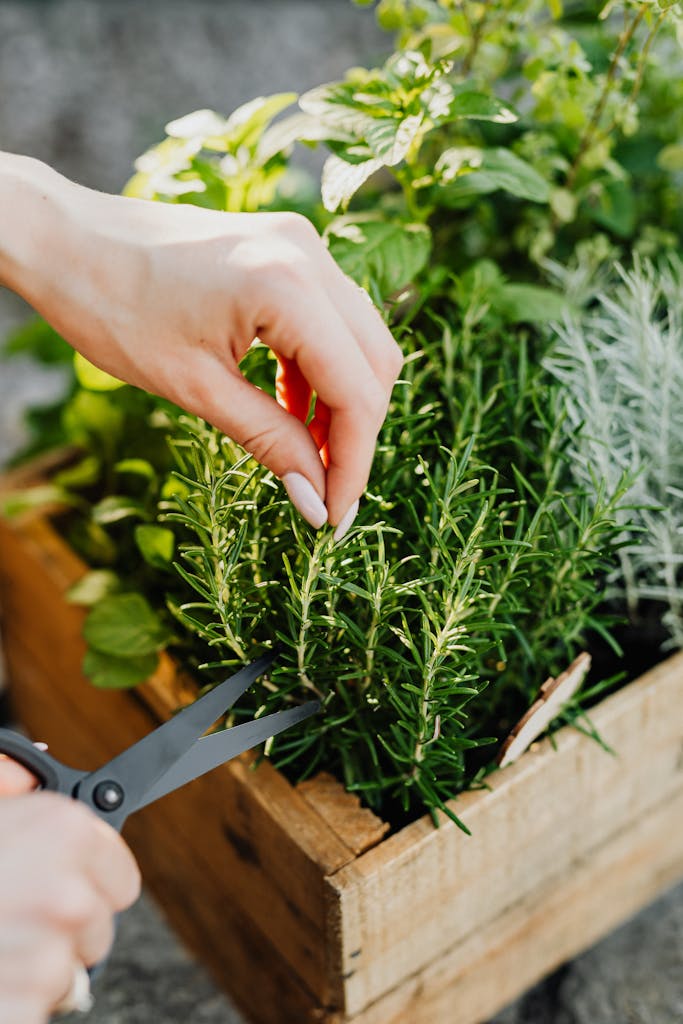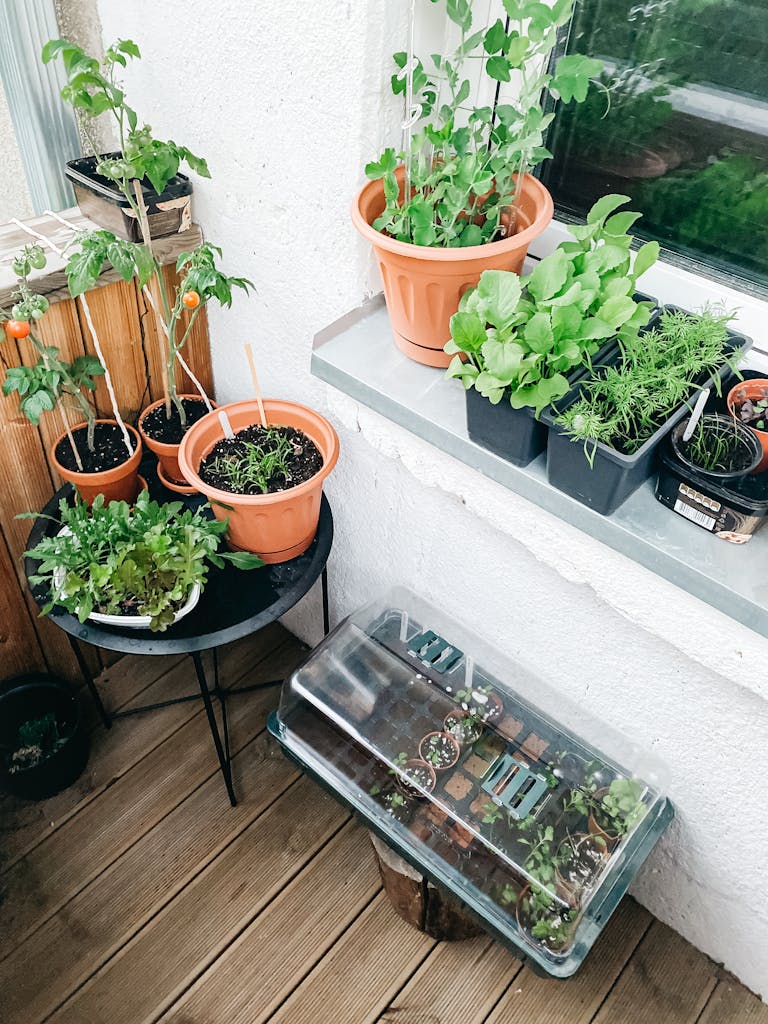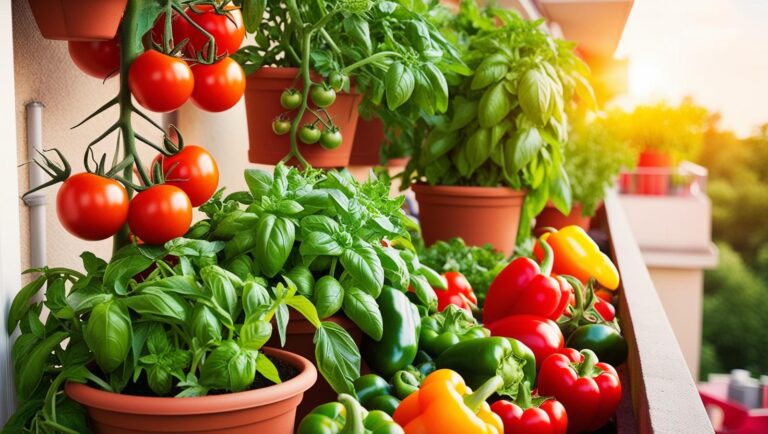Meta description: “Learn how to create an automated indoor herb garden with this step-by-step guide! Discover the best tools, tips, and tricks to grow fresh herbs year-round, even in small spaces. Perfect for beginners and urban gardeners!”
Imagine stepping into your kitchen and snipping fresh basil, parsley, or thyme straight from your indoor herb garden—no grocery trip required! Sounds like a dream, right? With a little effort and some clever automation, you can make this a reality, even if you’ve never grown anything before.
In this guide, I’ll walk you through how to create an automated indoor herb garden. It’s like having a green thumb on autopilot! Whether you want fresh herbs for cooking, tea, or just to enjoy the greenery, I’ve got you covered. Let’s dive in!
Why Create an Automated Indoor Herb Garden?
Before we get into the nitty-gritty, let’s talk about why you should consider this project:
1. Convenience at Your Fingertips
Automation simplifies the process, caring for watering, lighting, and even nutrient delivery. This means you can focus on enjoying the fruits—or rather, herbs—of your labor without the constant upkeep.
Time is the most expensive currency. I’m stuck between holding down a couple of part-time jobs, caring for my home, homeschooling two kids, running errands…., and the list goes on.
Automation isn’t the best way for me to garden; it’s the only way I can.
2. Freshness Like Never Before
Store-bought herbs often lack flavor and freshness. Growing your own ensures that every leaf you pick bursts with aroma and nutrients. Also, you know what has been sprayed on and what hasn’t been sprayed on your herbs.
No icky pesticides for me, thank you.
3. Sustainability and Eco-Friendliness
An indoor herb garden reduces waste, packaging, and the environmental footprint associated with commercially grown herbs. Plus, it’s a step toward a more sustainable lifestyle.
Nothing makes you feel closer to the earth than working with her to grow food that nourishes your body without harming her in the process.
4. A Year-Round Harvest
Unlike outdoor gardens, which are at the mercy of seasons, an indoor setup lets you grow herbs no matter the weather. Rain or shine, your basil will thrive!
All you need is a window to let the sunshine in!

What You’ll Need to Get Started
Creating an automated herb garden doesn’t require a ton of space or expertise.
Here’s a quick checklist:
Essential Supplies
- Herb Seeds or Starter Plants: Basil, mint, parsley, cilantro, and thyme are great choices.
- Planters or Pots: Look for ones with drainage holes. If aesthetics matter, ceramic or terracotta pots are beautiful options.
- Potting Soil: A high-quality, well-draining mix is essential. You can also mix in some perlite for better aeration.
- Grow Lights: Full-spectrum LED grow lights mimic sunlight. Adjustable ones are ideal as your plants grow. (optional)
- Watering System: Options include self-watering pots, drip irrigation systems, or even hydroponic setups.
- Nutrient Solution: If using a hydroponic setup, you’ll need liquid nutrients tailored for herbs.
Automation Tools
- Timers for Lights and Watering ensure that your herbs receive consistent care even when you’re on vacation.
- Smart Plugs: For controlling devices remotely via an app.
- Sensors: Optional tools to monitor soil moisture, light levels, and temperature. These are particularly handy if you’re a data enthusiast.
Step 1: Choose the Right Location
The first step is finding the perfect spot for your herb garden.
What to Look For:
- Light: Herbs thrive with 6-8 hours of light daily. If natural light is limited, use grow lights.
- Space: Even a tiny windowsill, countertop, or corner can work.
- Access: Make sure the area is easy to reach for planting and harvesting.
Creative Location Ideas:
- Kitchen Countertop: Keeps herbs within arm’s reach while cooking.
- Floating Shelves: A stylish way to save space and add greenery to your home. Useful for when you don’t have a wide windowsill to work with.
- Wall-Mounted Planters: Ideal for small apartments or tight spaces.
Step 2: Select Your Herbs
Not all herbs are created equal when it comes to indoor gardening. Some are more forgiving and thrive in controlled environments.
Best Herbs for Indoors:
- Basil: Great for cooking and easy to grow.
- Mint: Perfect for teas and cocktails. It’s also a natural air freshener!
- Parsley: A versatile kitchen staple packed with vitamins.
- Thyme: Compact and flavorful, it’s a must-have for soups and roasts.
- Cilantro: A favorite for salsa and guacamole.
Pro Tip:
Mix and match herbs with similar growing requirements. For instance, basil and parsley both enjoy moist soil, while thyme prefers drier conditions.
Step 3: Set Up Your Automation System
Here’s where the magic happens! Automation takes the guesswork out of herb gardening so that you can enjoy fresh herbs with minimal effort.
Automating Watering
- Self-Watering Pots: These have built-in reservoirs that supply water as needed. They’re great for beginners.
- Drip Irrigation: A small pump and tubing system can deliver water directly to each plant. This setup is ideal for larger herb gardens.
- Timers: Attach a timer to your watering system to ensure consistent hydration.
Automating Lighting
- Full-Spectrum LED Grow Lights: Place them 6-12 inches above your plants for optimal growth. You may only need these in the wintertime.
- Smart Timers: Set your lights to turn on and off automatically, mimicking natural daylight.
Monitoring Soil and Environment
- Soil Moisture Sensors: These gadgets let you know if your plants are thirsty.
- Temperature and Humidity Sensors: Ideal for maintaining a stable growing environment.
Step 4: Planting Your Herbs
Now it’s time to get your hands dirty!
Steps for Planting:
- Fill Your Pots: Use well-draining potting soil, leaving about an inch of space at the top.
- Plant Your Seeds or Starters: Follow the planting depth instructions on your seed packets.
- Water Gently: Moisten the soil without overwatering.
If you’re using a hydroponic system, place your seeds or seedlings in net pots with a growing medium like coco coir or clay pellets.
Step 5: Maintain Your Automated System
Even with automation, a little maintenance goes a long way.
Tips for Success:
- Check Water Levels: Ensure your self-watering system or reservoir stays filled.
- Adjust Lights: As your herbs grow, raise the lights to avoid burning the leaves.
- Prune Regularly: Harvest herbs frequently to encourage new growth and prevent overcrowding.
- Clean Your Setup: Wipe down grow lights and clean pots or reservoirs to prevent mold and algae.
Advanced Automation Ideas:
Use a smart home hub like Alexa or Google Home to control your garden’s lights and watering system with voice commands.
Step 6: Harvest and Enjoy Your Herbs
The best part of having an indoor herb garden is using your harvest!
How to Harvest:
- Basil: Pinch off leaves from the top to encourage bushy growth.
- Mint: Trim stems just above a leaf node.
- Parsley: Cut stems at the base for continuous growth.
- Thyme: Snip sprigs as needed, leaving the woody base intact.
- Cilantro: Harvest entire stems when they’re about 6 inches tall.
Creative Ways to Use Your Herbs:
- Cooking: Add fresh herbs to pasta, soups, and salads for a burst of flavor.
- Drinks: Use mint or basil in cocktails and mocktails.
- DIY Projects: Make herb-infused oils, butters, or teas.
Troubleshooting Common Issues

Even with automation, you might encounter a few hiccups. Here’s how to handle them like a pro:
1. Yellowing Leaves
- Cause: Overwatering or nutrient deficiency.
- Solution: Check your watering schedule and ensure your plants aren’t sitting in soggy soil. For hydroponics, adjust the nutrient levels.
2. Leggy Growth
- Cause: Insufficient light.
- Solution: Move your herbs closer to the grow lights or increase the light duration.
3. Pests
- Cause: Indoor pests like aphids or spider mites can find their way to your plants.
- Solution: Use neem oil or insecticidal soap. For severe infestations, isolate affected plants immediately.
4. Mold or Mildew
- Cause: High humidity or poor air circulation.
- Solution: Use a small fan to improve airflow and avoid overwatering.
Fresh Herbs Made Simple!
Creating an automated indoor herb garden is one of the most rewarding and practical projects you can tackle. With the proper setup, you’ll enjoy a steady supply of fresh, flavorful herbs year-round, all while adding a touch of greenery to your home.
Remember, it’s not about perfection—it’s about creating a system that works for you. Start small, experiment, and tweak your garden as you go. Soon enough, you’ll snip fresh basil for pasta or mint for tea like a pro.





